
Lot 160
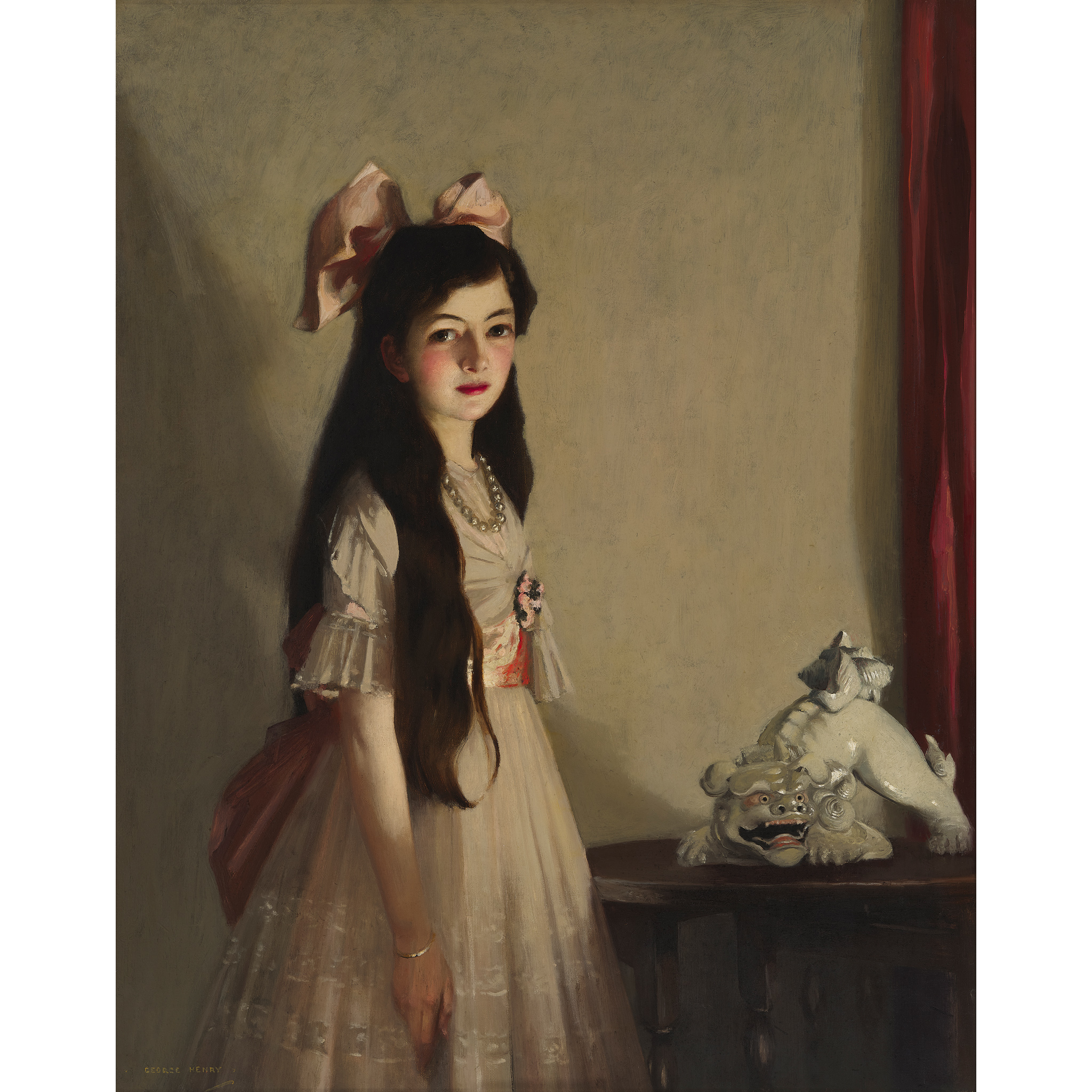
GEORGE HENRY R.A., R.S.A., R.S.W. (SCOTTISH 1858-1943)
BEAUTY AND THE BEAST
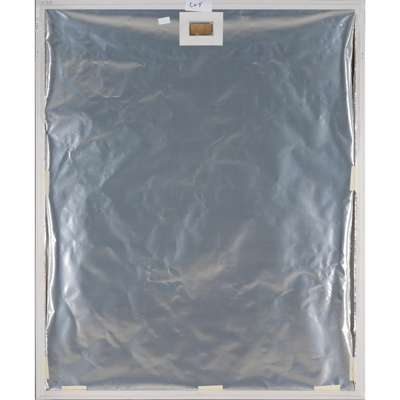
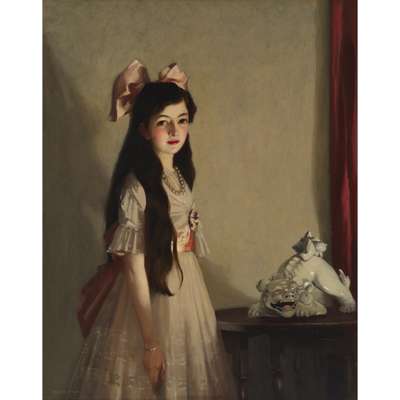
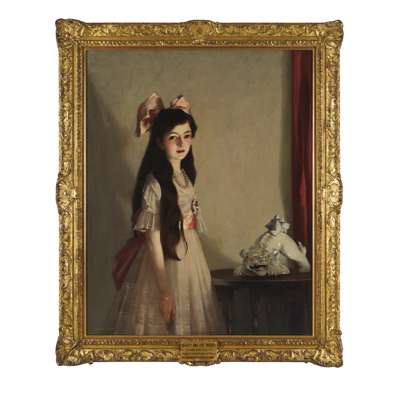


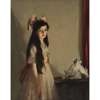

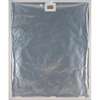
Scottish Paintings & Sculpture
Auction: Evening Sale | Lots 112- 206 | Thursday 05 June from 6pm
Description
Signed, oil on canvas
Dimensions
122cm x 96.5cm (48in x 38in)
Provenance
William Muir McKean, Paisley
Presented to Paisley Art Institute by the above in 1932
Exhibited:
Royal Scottish Academy, Edinburgh, 1944, no. 369
Royal Glasgow Institute, 1944, no.293
Footnote
Of all The Glasgow Boys, George Henry is one of the most notable for the diversity and innovation of his artistic output. From realist works inspired by the French naturalist school, through avant-garde forays into folkloric subject matter that demonstrated an engagement with Symbolism and Post-Impressionism, Henry’s abundant skill encompassed the fast-moving developments in European art at the end of the nineteenth century.
A further genre mastered by Henry, though more quietly celebrated by art history books, was his success within the area of society portraiture. Following in the footsteps of Walton, Guthrie and Lavery before him, Henry knew that a reliable income - and indeed public acceptance - lay the way of the society portrait. Initially deployed as a method to raise funds to repay creditors in Glasgow, Henry would ultimately lean into portraiture as the predominant means of supporting his career, trailing his peers to London and establishing a studio there.
From 1890 onwards, The Glasgow Boys saw their work gradually absorbed into the Royal Scottish Academy, as well as shown in London’s Royal Academy, New English Art Club and the Grosvenor Gallery with increasing regularity. This was accompanied by press attention and positive critical regard. Success in Europe and America towards the end of the decade lifted their reputations even further and, as their stock rose, so too did the volume of their portrait commissions.
The Edwardian era was a popular time for portraiture. In the period immediately preceding the First World War it was undergoing a revival, a ‘luxurious finale’ to a gilded age in Britain. At a time that saw the popularisation of the photographic portrait, a likeness in paint became a more rarified signifier of status. Likewise, an expanding middle class viewed portraiture as a means by which to cultivate their aspirations. Portrait artists held a lot of social cachet in this period. Indeed, it could be said that no respectable dinner party was complete without one. Many, including Whistler, Sargent and Lavery, attained celebrity within society circles. It was felt that a portrait by the right artist had the power to ‘make’ a reputation.
Lyon & Turnbull are delighted to present to market two exceptionally fine portraits by George Henry: Beauty and the Beast and Lady with a Green Scarf.
Portraiture at the time contained subsets of trends, led in the main by the two greatest figures of influence, Whistler and Sargent. The Glasgow Boys were famously devotees of the Whistlerian aesthetic, and this is most clearly borne out in Beauty and the Beast. This is manifest in the drama of simple shapes against a minimalistic background, the balanced pre-occupations of aestheticism with factual likeness, and above all, the restrained palette of harmonious tones. It is an unusually arresting portrait of a young girl on the cusp of womanhood, in which the artist is playfully overt about the subtext connoted by the painting’s title. The strong, glancing light is nothing short of dramatic, and in impactful contrast with the childlike ‘prettiness’ of the pink bows and white lace of her hair ribbon and dress. The shadows which portentously loom behind the sitter serve to enhance the allegory at the portrait’s heart. Her expression is hard to place – simultaneously direct and reticent, the overall effect being subtly enigmatic.
Lady with a Green Scarf, dated 1917, is perhaps more in the manner of Sargent. There is a stronger feeling of Henry’s naturalist roots in the sense of movement in the pose; the figure turning, lost in reverie perhaps, toying with her fan. The space she occupies is not descriptive; instead, the focus is given to the bravura brushwork of the fabulous scarf the sitter wears. This portrait feels less a psychological study of the subject than an artist revelling in his powers as a painter, the former sacrificed to the latter to extremely decorative, rather than detrimental, effect. This brushwork could be seen as a move towards a more modern simplicity in style, all ‘wriggle and chiffon’, as Walter Sickert so superbly summarised the trend at the time.







